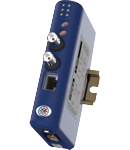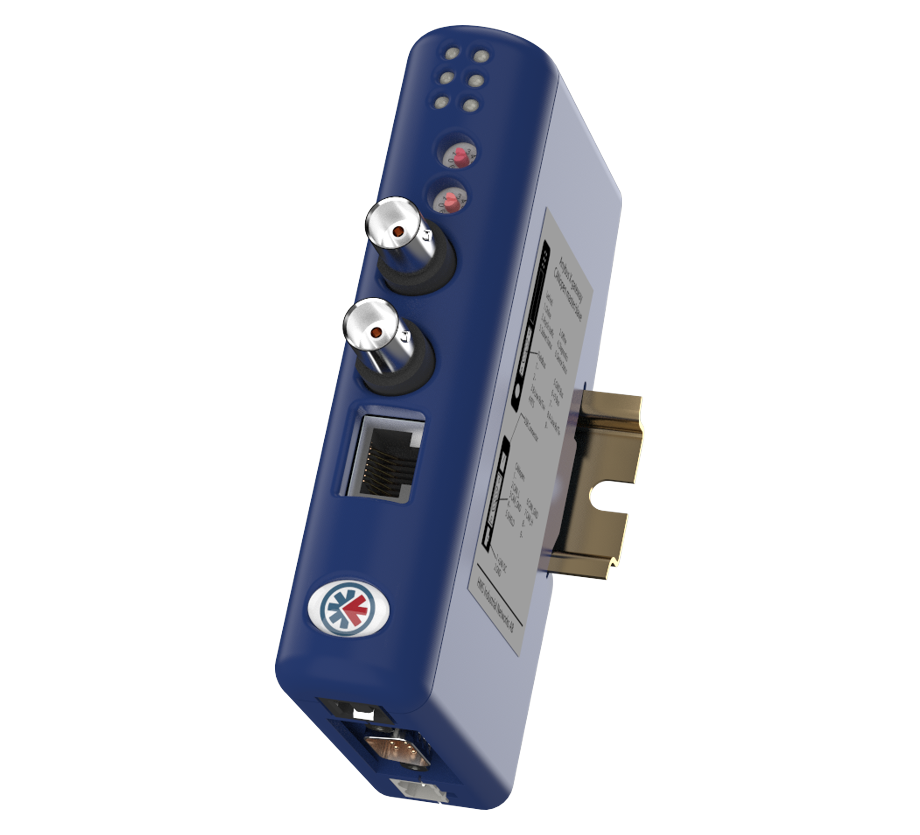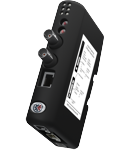Communicator CAN - ControlNet gateway
Anybus CAN to ControlNet data converter
The gateway works as a ControlNet slave for the primary network and as a standard CAN node for the second network
The Communicator performs an intelligent data conversion and presents CAN data to a PLC/Controller in the ControlNet network as easy to process I/O data. With convenient configuration software basically every manufacturer-specific CAN data protocol can be exchanged to ControlNet, or vice versa.
Features and benefits
- Saves machine builders and device manufacturers of integrating a ControlNet interface
- Requires no hardware or software changes to be made to CAN-devices
- Compatible with all PLC's and controllers with ControlNet support
- Performs complete CAN protocol conversion, no PLC function blocks required
- Flexible CAN frame building method for both Response/Request or Produce/Consume protocols
- Intelligent I/O data mapping within the Communicator permits even devices with slow CAN communication can be integrated without any restrictions to ControlNet
Conversion of I/O-data
The Anybus Communicator maps data byte from CAN messages into I/O data in the ControlNet network, and vice versa. This mapping is highly flexible and can contain an arbitrary set of CAN Id’s and data. CAN communication is supported both by both producer /consumer or request/response protocol schemes, who are configured with a flexible CAN frame building method.
All data between ControlNet and the CAN network is transferred through an internal memory buffer inside the Communicator. This method of data exchange also permits CAN devices with slow communication to be integrated into high-speed ControlNet networks without any restrictions. The Communicator appears as a standard I/O module on the ControlNet side.
Easy configuration - No programming required!
The mapping of data between CAN and ControlNet is quickly set up in the Anybus Configuration Manager software, included with the Communicator CAN. No programming skills are needed to set up the Communicator.
CAN-configuration features
- Graphical CAN frame building support using several ready-made CAN functions.
- Can configure any CAN 2.0A or 2.0B based protocol (11 and 29 bit identifiers).
- Configures upto 128 transactions containing a total of 256 CAN frames
- Monitor/Modify function of process I/O data informing of CAN transaction status
- Diagnostic transaction Live List in the network I/O informing of CAN transaction status
- Handy Save/Load function allows for a completed configuration to be re-used for many other installations
- Password protection prevents unauthorized upload and download of configurations
ControlNet interface features
- ControlNet CONFORMANCE TESTED™ by ODVA
- ControlNet Specification version: Communications Adapter profile 12
- Max. 450 bytes of Input and 450 bytes of Output data
- ControlNet baudrate 5 Mbit/s
- Supports Polled & Bitstrobed, I/O Change-of-state / cyclic I/O
- Supports media redundancy
- MacID node address setting via DIP switch
- Network Access Port (NAP)
- ControlNet network configuration via .EDS file
- Can be used with RG-6 quad shielded cable
| Technical data | |
| Dimensions | 120 x 75 x 27mm |
| Weight | 150g |
| Operating temperature | -25 to +55 °C |
| Storage temperature | -40 to +85 °C |
| Power supply | 24 VDC |
| Current consumption | Typical 150mA |
| Configuration port | USB |
| CAN | |
| Baudrate | 20 kbit/s - 1 Mbit/s |
| Protocol support | CAN 2.0A and 2.0B (11 and 29 bit identifiers) |
| Connector | D-sub 9 Male |
| ControlNet | |
| Connector | 2x BNC |
| Galvanic isolation | On both CAN and ControlNet side |
| Protection class | IP20 |
| Mounting | DIN-rail (EN 50022 standard) |
| Certifications | CE, CULUS, ATEX/Haz.Loc, RoHS |
| Contents of delivery |
| - Anybus Communicator CAN-ControlNet |
| - Configuration cable (USB) |
| - D-sub9 connector with screw |
| - Anybus Configuration Manager (Windows™) |
| - Quick Reference Manual |
| - User Manual |
Part number(s)








